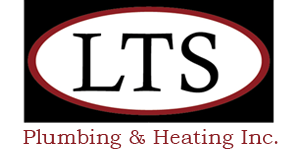
A furnace is almost always a background player in your home, helping keep you warm during the cold winter months. It frequently won't be noticed until something breaks down.
One source might be that your furnace has a cracked heat exchanger. It can potentially be hazardous, so it’s important to familiarize yourself with the symptoms of a cracked heat exchanger and what you can do if you believe that might be the problem.
What Is a Heat Exchanger in a Furnace?
A heat exchanger transfers heat from the combustion chamber in your furnace to the air that circulates through the ventilation. It typically handles this with coils or tubes that warm the air while serving as a barrier to keep byproducts formed in the combustion chamber, called flue gasses, from getting out into your home.
Is a Cracked Heat Exchanger Dangerous?
Because of its key role, it’s no surprise that a cracked heat exchanger can be hazardous. Cracks in the heat exchanger can permit dangerous gasses – including carbon monoxide, which can be lethal – to flow across your home.
For obvious reasons, don't ever use your heating if you believe it has a cracked heat exchanger, as this could make the entire household ill. Contact an HVAC professional immediately if you think your heating has a cracked heat exchanger that should be repaired.
Four Symptoms of a Cracked Heat Exchanger:
- Furnace turns off: Cracks in the heat exchanger may cause your furnace to turn off.
- Strange Smells: If the air coming out of your furnace has a powerful chemical smell, it might be an indicator that gas is leaking through cracks in your heat exchanger. These byproducts, which will often smell like formaldehyde, are a significant warning sign.
- Carbon monoxide alarm initiates or you recognize health problems: If a cracked heat exchanger is emitting carbon monoxide in your home, your carbon monoxide alarm may go off or family members might experience signs of carbon monoxide poisoning. Symptoms include headaches, dizziness, weakness, nausea, vomiting or feeling tired. If your alarm goes off or you feel unusually tired, get out of the home immediately and then call for help.
- Soot: If you notice black sooty accumulating on the exterior of your furnace, it’s another sign something may be seriously wrong.
What You Can Do if the Furnace Heat Exchanger is Cracked
If you worry your furnace has a cracked heat exchanger, call a pro well versed in furnace installation Shamokin and Sunbury right away so they can examine your system and, if required, start a furnace heat exchanger replacement. Costs should fluctuate depending on the situation, but estimates can roughly suggest $1,000 to $3,000.
Fortunately, the good news is that heat exchangers are regularly covered by the warranty. You’ll want to check the warranty paperwork on your furnace, as while the warranty might not cover the entire cost of repairs, it can significantly reduce your bill.
How to Avoid a Cracked Heat Exchanger in Your Home
One of the easiest ways to avoid problems in your furnace overall is through routine furnace maintenance. Furnaces work the best when they work efficiently. Contacting a trained professional to examine your furnace for old parts, clogs in the air filters and other likely problems can help you avoid getting a big bill later on.
It’s also a good idea to review your furnace filters every few months – it’s ideal some filters be replaced every 90 days or sooner if they are dirty or grimy. While the filters aren't a part of the heat exchanger itself, the strain of pulling air through a clogged filter makes the entire furnace work longer to accomplish its job. And the harder your furnace works, the more deterioration parts like the heat exchanger will endure.
